The weekend of 9-10 November, has had a whiff about it. More precisely, the funky waft of a fresh manure heap. Solid gold to allotments at this time of year, the milkshake that brings all the plotholders to the site.
(There are a *lot* of photos in this post, and it might not all fit on your email. Hitting the View Entire Message button at the end should sort this out, as will reading via the app or online versions of Substack.)
This week’s Plot Shot
The shortening daylight hours are starting to trim the working days on the plot, but it is not all winter gloom as next season’s new crops are getting underway. Here are the first of the broad beans, doing well.
Aren’t they beautiful? They’re a green which always looks very particularly ‘broad bean green’ to me, almost a Farrow & Ball paint colour. (I checked - F&B have two greens, ‘Raw Tomatillo’ and a ‘Pea Green’, which are the closest on their colour card, but neither have the bright yellow undertone of these broad bean leaves.) OK, the colour would probably work as an accent colour on woodwork - shirting boards or doorframes - but probably not whole walls of the stuff.
Plot work in progress
The weekend’s work was dominated by the arrival of a huge steaming heap of manure to the site, courtesy of the Lee Valley Riding Centre. Horse manure is rare in London, cow manure all but impossible, so having a stables in the neighbourhood is a bonus for all the borough’s allotments. Plus, it is free - just takes a phone call to the stables to arrange delivery and someone to be on site to unlock the gate when the truck arrives.
This load was a good one. No rubbish mixed in (picking sweet wrappers out of manure is not my personal definition of ‘fun’), good and hot inside the heap so already breaking down, and enough stable straw mixed in to add some bulk to the soil.
I got my steps in and more, pushing the wheelbarrow back and forth until I’d filled the newly-dug asparagus bed with a mound. It will stay there over winter, doing the job of a mulch against weeds while it rots down, ready to be distributed across the rotation beds to feed annual crops come the spring.
Harvesting now
Not harvested on our plot, but on a friend’s in Pontypridd in South Wales, were lots of this year’s Babington’s perennial leeks. Friend Sam sent me a package of bulbils from his Ponty plot, which I’m sharing out.
I did a bit of research on the Babington’s leek, ‘Allium ampeloprasum babingtonii’, and it seem that they are quite rare, growing wild only in Britain, Ireland and the Channel Islands. Botanist Charles Cardale Babington was a contemporary of Charles Darwin (they look as if they had the same barber, given their beards). I couldn’t find a good botanical print of the plant, but came across a lovely botanical painting shared below.
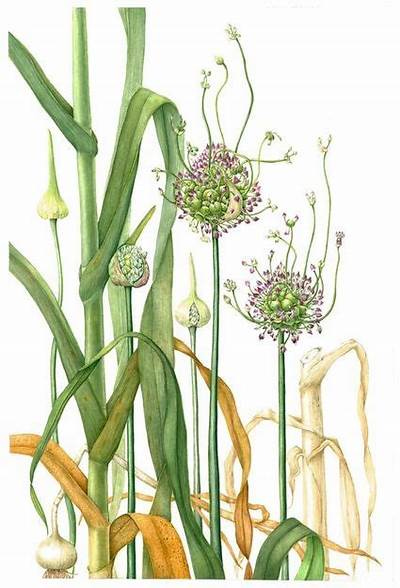
Thanks to Sam we have about 100 bulbils1, so I’m sharing them out with neighbours across the site in small waxed seed packets, and we’ll see if any come up next year. I’m looking forward to the chaotic hair of the flowers.
Making and eating
Given the lack of produce to harvest this week2, I was magpie-drawn to the shiny gold stickers on the persimmons in the local Turkish shop. There was a whole tray of perfect fruit, packed carefully like Christmas baubles.
They must have snagged my attention at the same time last year, as we made a delicate persimmon, vanilla and saffron jam from a similar tray of fruit at roughly this time last November. I see an anise-spiced compote in the future of these beauties, to go with a crisp roast duck.
E17 Local Hero
This week’s Hero spot goes to the plot’s many cardoon and artichoke plants, who are merrily spreading beyond the beds we originally planted them in by self-seeding volunteer colonists elsewhere. They are one of our signature plants of the plot, along with our climbing roses.
At the end of the summer we cut down the down the brown towering stems of the year’s growth once the blue flowers have done their job as beacons for pollinators and compost them. The beds underneath get an annual clearing and weeding, then we wait. By November, the new shoots of next year’s plants are already a meter tall in places, and a couple of the outlier volunteers are earmarked to be dug up and relocated to a neighbour’s plot. On allotment sites, you can tell which plotholders are friends with whom, as spare plants spread through friendship groups.
Community of Practice
The arrival of the manure mountain set off a lively debate about the practice of mulching, revealing how everyone in the allotment gang has had successes and failures with different methods and materials.
We remembered that for a couple of seasons, the local council waste facility used to deliver heaps of black, heat-treated domestic waste as ‘soil improver’. The soil was definitely not improved - all we had was black shredded stuff littered with bits of coloured plastic which were tedious to pick out. (I found small broken toys, bits of artificial Christmas tree, shiny sweet wrappers - maybe they burnt the remnants of the previous Christmas?) It added bulk to the soil and topped up raised beds, but had no nutritional value to it whatsoever. I remember Lorraine tried to grow potatoes in it and nothing grew. That’s pretty unusual for a potato, which will grow in the dark of a vegetable rack with no soil when nobody is looking.
The current manure heap is not yet rotted down. It’s not long come out the back ends of horses at the stables, after all. This means we all try to find space on our plots to make a heap of manure, to slowly decompose over winter. Not everyone has a spare bit of ground for a manure heap so there has been some frantic reshuffling to make space, and (literally) get some while it is hot.
The Weekly Fox
Our fox family has has a difficult week, as several of their dens were disturbed by contractors clearing down an old area of the site as a turning circle for vehicles. There’s some reshuffling in their lives too, accompanied by some snapping and yelping, as everyone finds themselves new digs.
Until next week, this is what top vixen Vinnie thinks of the general state of things.
Ang
Not exactly produce, but if Sam had charged for these like other commercial growers, he could have sold them for £10 per 2O bulbils. The folk at Incredible Vegetables have them. So that’s £50-worth of perennial leeks - cheers Sam!
Nothing to add to the tally this week, so we are static at £171.84. That’s ten weeks’ produce since Episode #5, based on current supermarket or local farmers’ market prices.

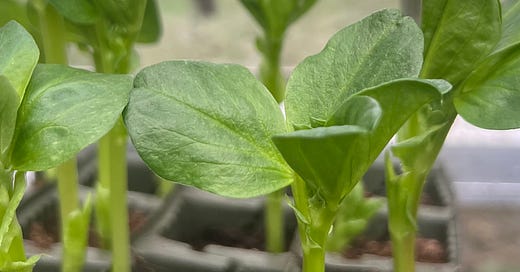



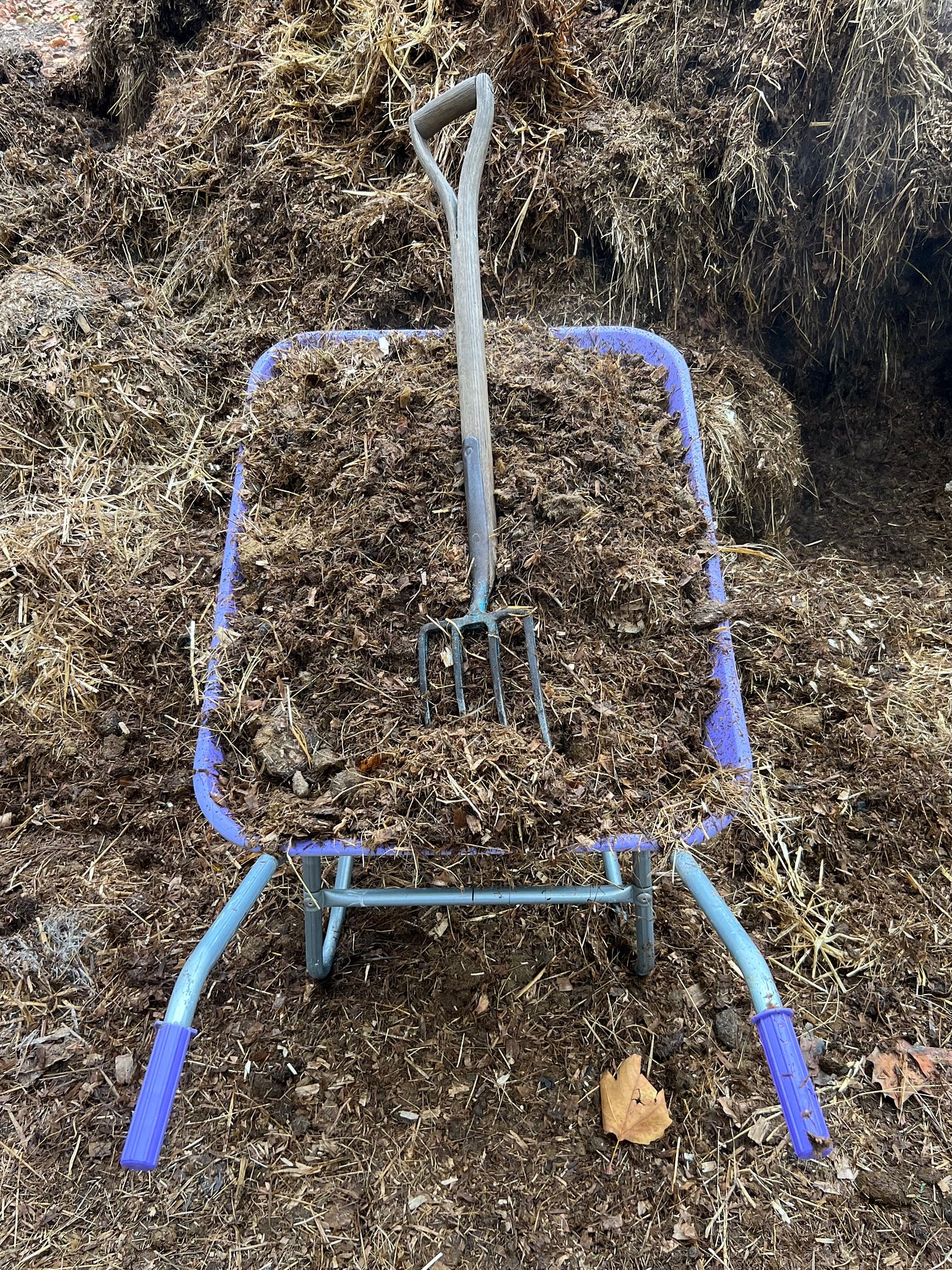
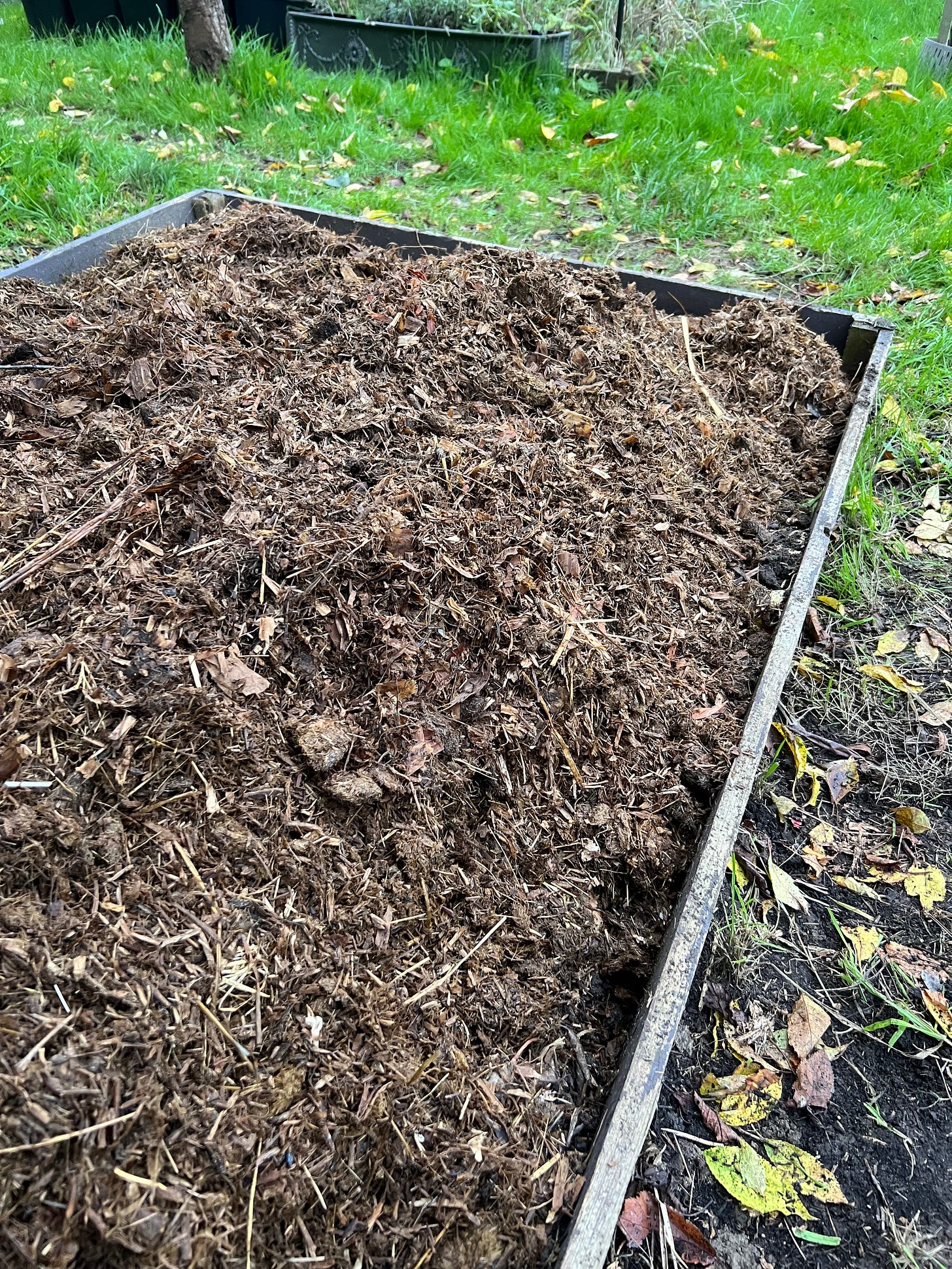
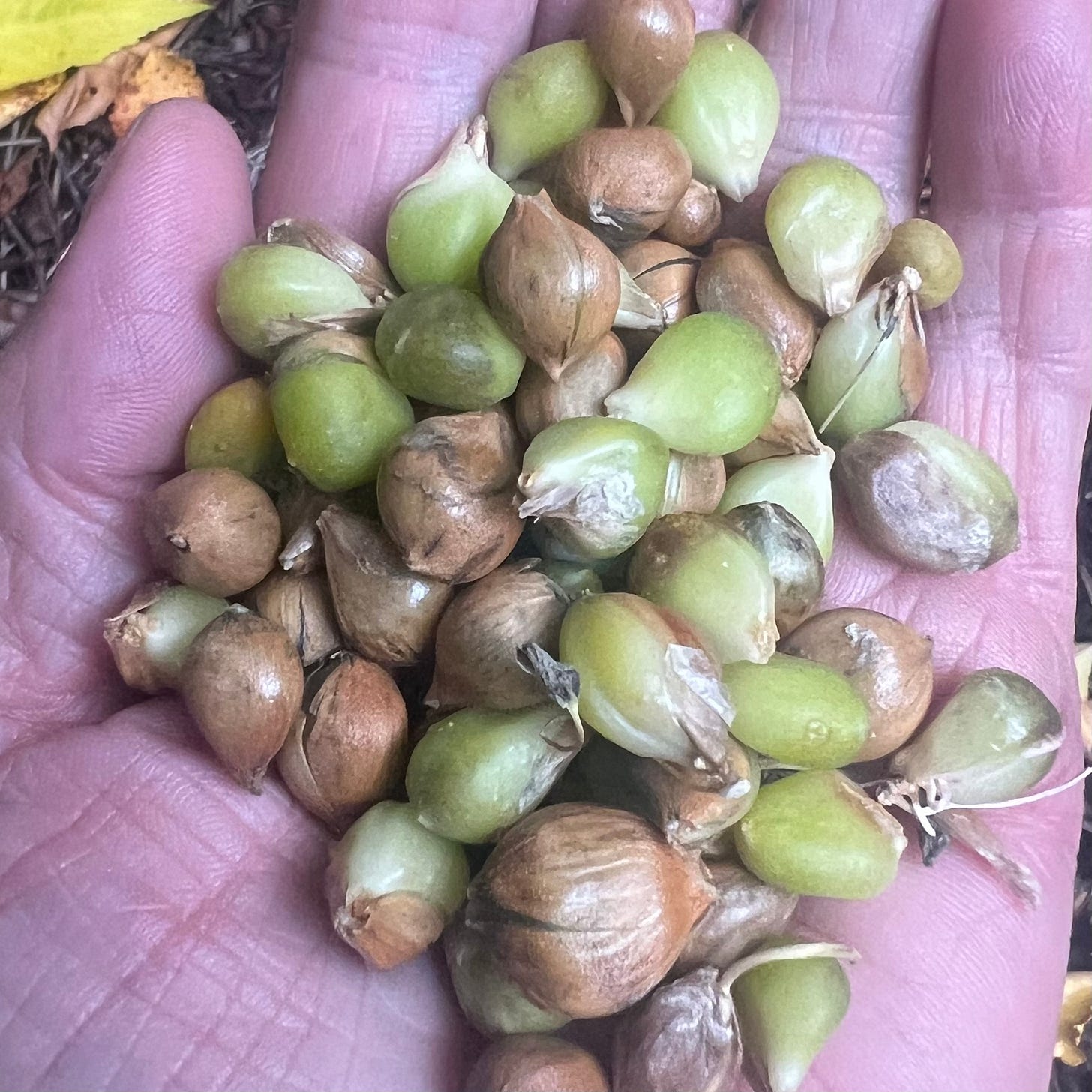
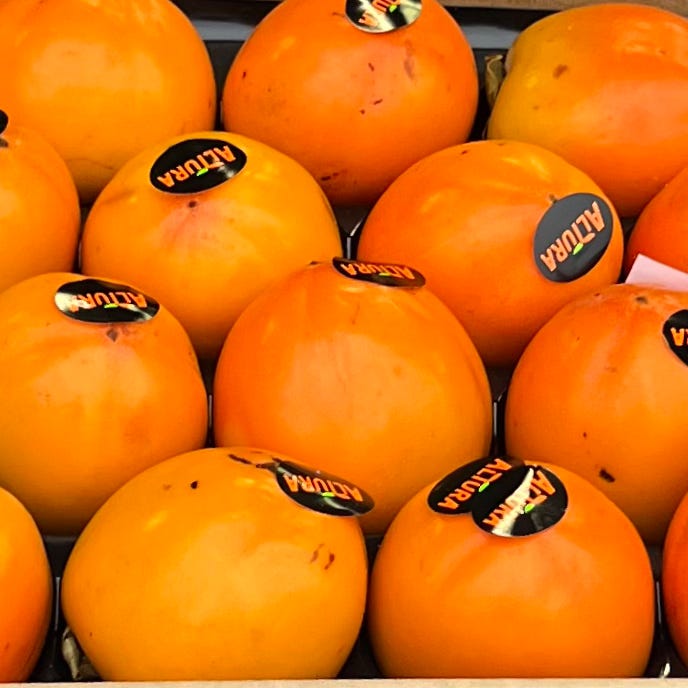
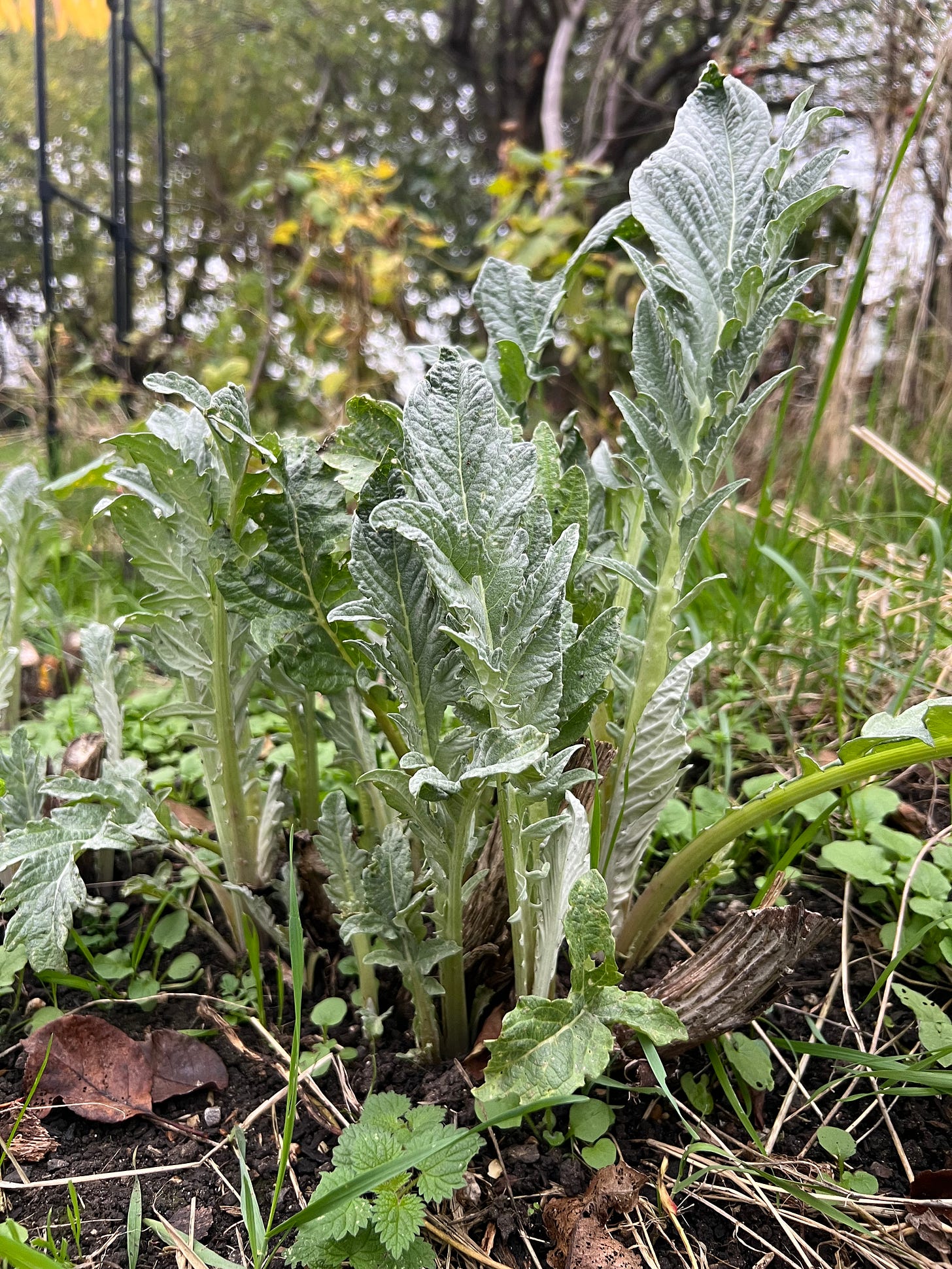
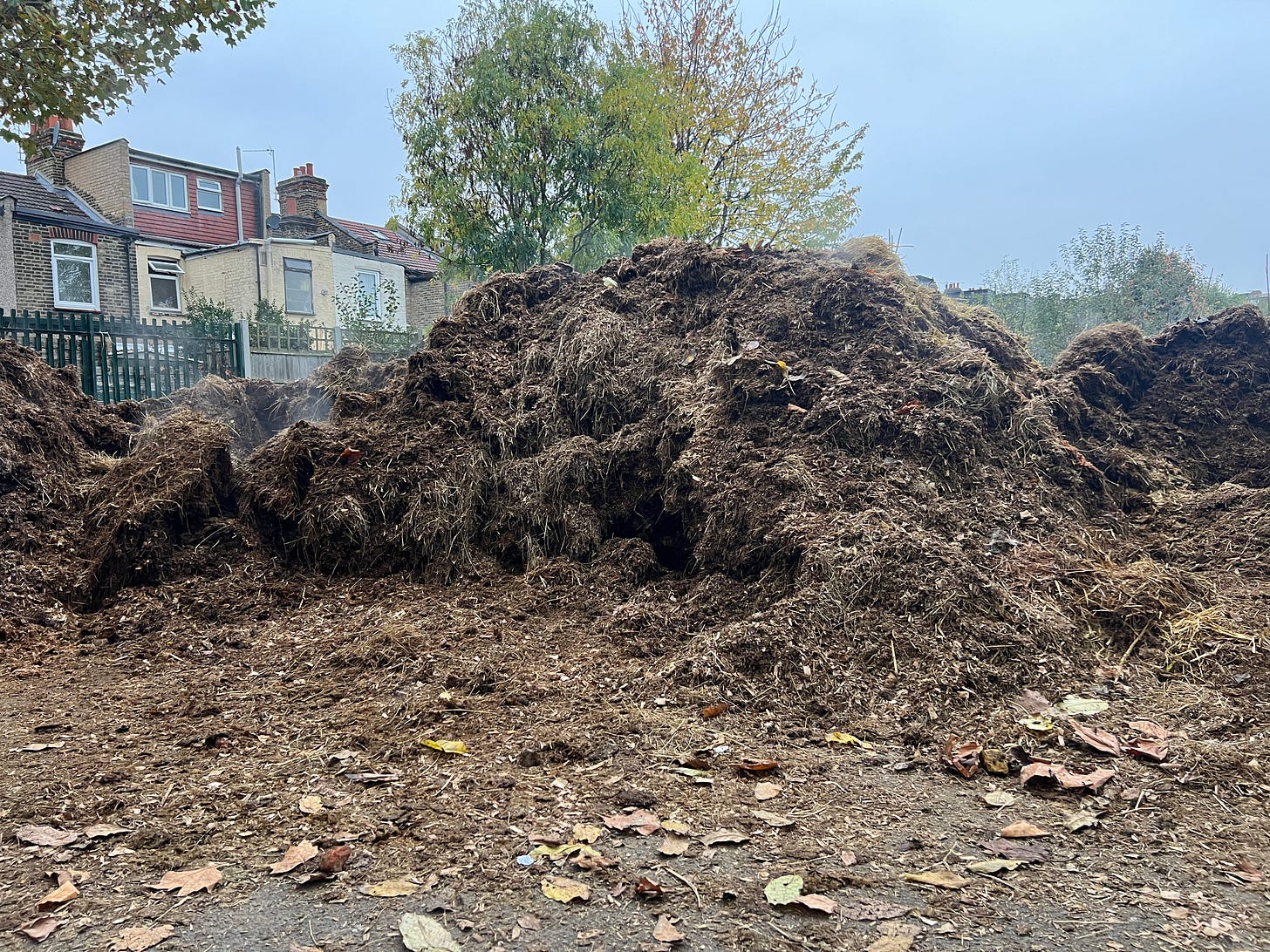

Babington's are such fun - I just love the quirky flowerheads - can be tricky to keep going esp as they disappear and pop back up in winter - mine come and go so I save all the bulbils
Loving the manure mountain Ang! I miss the Highbury manure man who would knock once a year and put it straight on my beds.